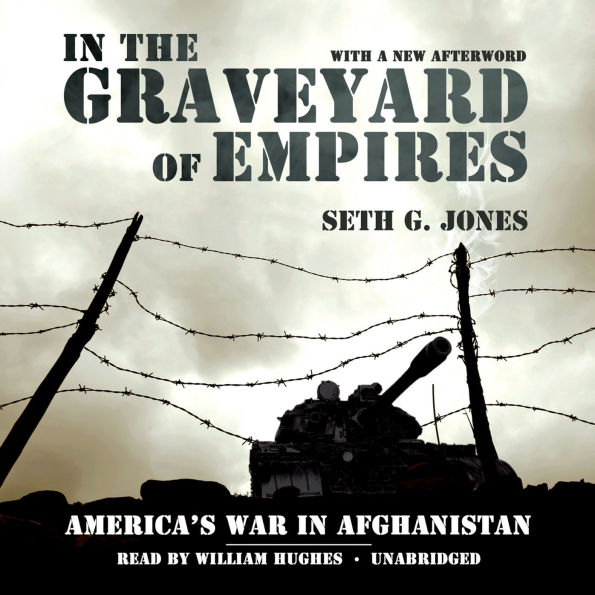A scholarly account of America's unsuccessful effort to avoid the same fate as three other great powers who tried to tame Afghanistan. RAND political scientist Jones (Foreign Service/Georgetown Univ.; The Rise of European Security Cooperation, 2007) begins by describing the failures of Alexander the Great, Victorian Britain and the Soviet Union, reminding readers that the United States missed its first opportunity in the area after the Soviet withdrawal in 1989. Delighted at humiliating our Cold War enemy, American forces withdrew, well-armed Afghan factions turned on each other and the nation descended into lawless chaos. Some semblance of order returned in the '90s when the Taliban conquered most of the country and established an oppressive Islamic regime. In 2001, enraged at its refusal to surrender Osama bin Laden, U.S. forces attacked the country and aided Taliban opponents, who triumphed in a few months. At this point, Jones slows to deliver a blow-by-blow account of how America squandered this victory. As fighting died down, U.S. leaders turned their attention to an invasion of Iraq. During several relatively peaceful postwar years, Afghanistan made progress in establishing a constitutional government, improving education and rebuilding infrastructure. Unfortunately, it never achieved a stable government's primary duty-providing security. Police and officials remained ineffective and corrupt and warlords and criminals reclaimed their turf. The chaos that followed the Soviet withdrawal returned-along with the Taliban and other insurgencies, rested and rejuvenated in Pakistan. Jones admits that America is trying to correct its mistake but rightly wonders if the government will beable to devote as much effort, time and money as was devoted to a similar mistake-not yet corrected-in Iraq. An impressively researched, often grueling illustration of how U.S. leaders failed-once again-to learn from experience. Agent: Eric Lupfer/William Morris Agency
This definitive account of the American experience in Afghanistan is a political history of Afghanistan in the “Age of Terror” from 2001 to 2009, exploring the fundamental tragedy of America's longest war since Vietnam. After the swift defeat of the Taliban in 2001, American optimism has steadily evaporated in the face of mounting violence; a new “war of a thousand cuts” has brought the country to its knees. After a brief survey of the great empires in Afghanistan, Seth G. Jones examines the central question of our own war: how did an insurgency develop? Following September 11, the United States successfully overthrew the Taliban regime. It established security throughout the country, and Afghanistan finally began to emerge from more than two decades of conflict. But Jones argues that, as early as 2001, planning for the Iraq War siphoned off resources and talented personnel, undermining the gains that had been made. After eight years, the United States had pushed al-Qaeda's headquarters about one hundred miles across the border into Pakistan.While observing the tense, often adversarial relationship between NATO allies in the Coalition, Jones introduces us to key figures on both sides of the war. Using important new research and integrating thousands of declassified government documents, Jones analyzes the insurgency from a historical and structural point of view, showing how a rising drug trade, poor security forces, and pervasive corruption undermined the Karzai government, while Americans abandoned a successful strategy, failed to provide the necessary support, and allowed a growing sanctuary for insurgents in Pakistan to catalyze the Taliban resurgence. Examining what has worked thus far-and what has not-this serious and important book underscores the challenges we face in stabilizing the country and explains where we went wrong and what we must do to avoid the disastrous fate that has befallen many of the great world powers to enter the region.
This definitive account of the American experience in Afghanistan is a political history of Afghanistan in the “Age of Terror” from 2001 to 2009, exploring the fundamental tragedy of America's longest war since Vietnam. After the swift defeat of the Taliban in 2001, American optimism has steadily evaporated in the face of mounting violence; a new “war of a thousand cuts” has brought the country to its knees. After a brief survey of the great empires in Afghanistan, Seth G. Jones examines the central question of our own war: how did an insurgency develop? Following September 11, the United States successfully overthrew the Taliban regime. It established security throughout the country, and Afghanistan finally began to emerge from more than two decades of conflict. But Jones argues that, as early as 2001, planning for the Iraq War siphoned off resources and talented personnel, undermining the gains that had been made. After eight years, the United States had pushed al-Qaeda's headquarters about one hundred miles across the border into Pakistan.While observing the tense, often adversarial relationship between NATO allies in the Coalition, Jones introduces us to key figures on both sides of the war. Using important new research and integrating thousands of declassified government documents, Jones analyzes the insurgency from a historical and structural point of view, showing how a rising drug trade, poor security forces, and pervasive corruption undermined the Karzai government, while Americans abandoned a successful strategy, failed to provide the necessary support, and allowed a growing sanctuary for insurgents in Pakistan to catalyze the Taliban resurgence. Examining what has worked thus far-and what has not-this serious and important book underscores the challenges we face in stabilizing the country and explains where we went wrong and what we must do to avoid the disastrous fate that has befallen many of the great world powers to enter the region.

In the Graveyard of Empires: America's War in Afghanistan

In the Graveyard of Empires: America's War in Afghanistan
FREE
with a B&N Audiobooks Subscription

Editorial Reviews
Product Details
| BN ID: | 2940169804614 |
|---|---|
| Publisher: | Blackstone Audio, Inc. |
| Publication date: | 08/16/2010 |
| Edition description: | Unabridged |
Videos


